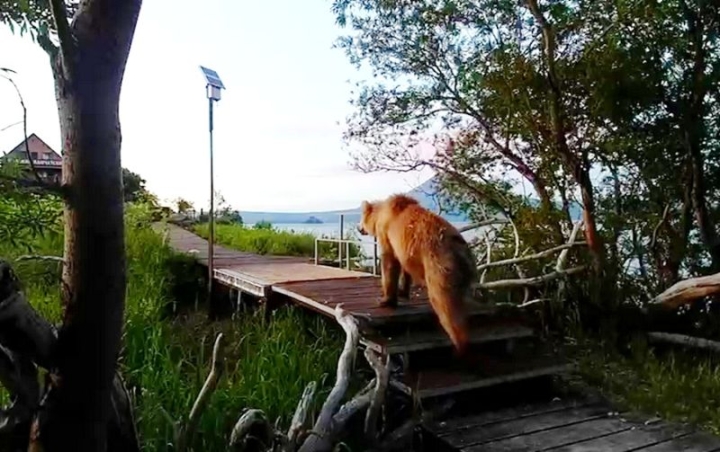Kamchatka bears were weighed on the shore of Kuril Lake

The platform scales are installed on the Grass cordon, on the trail leading to one of the largest sockeye salmon spawning grounds at the mouth of the Khakytsin River. They can withstand loads of up to a ton, the Kronotsky Nature Reserve told Kamchatka.Today.
Walking along their usual route to the fishing spot and back, the bears briefly stand on the scales. A camera trap is installed next to the trail, which records a specific individual and the time of its appearance on the platform.
With the help of scales, the reserve staff will find out how the body weight of animals changes during the bait period, how the number of salmon entering the spawning area, the luck of club-footed fishermen, and the abundance of plant food affect this.
Sensors were installed on the weighing platform. They were designed and manufactured with the expectation of a bearish step – clubfoot. Balancers were installed on the platform to minimize vibration when a predator was on it.
“An autonomous solar panel power supply system and a telemetry weight data transmission system have also been developed,” said Oleg Tukalo, a specialist in energy supply and communications systems at the reserve.
State inspectors and scientists working on Kuril Lake every field season have learned to distinguish between bears that appear annually near the cordons or have unusual appearance or behavior. One of them is a young bear named Glasha. She is only two and a half years old, but the female is already an excellent fisherman.
“On Friday, we learned the body weight of two bears: Glasha (85 kg) and another young bear (112 kg). And early this morning it turned out that Glasha had gained seven kilograms in two and a half days. And this is just the beginning. The equipment is currently being tested – everything is working fine so far,” said state inspector Liana Varavskaya.
The platform scales for bears were installed on the shore of Kuril Lake in 2021.
Photo by Liana Varavskaya/Kronotsky Nature Reserve.